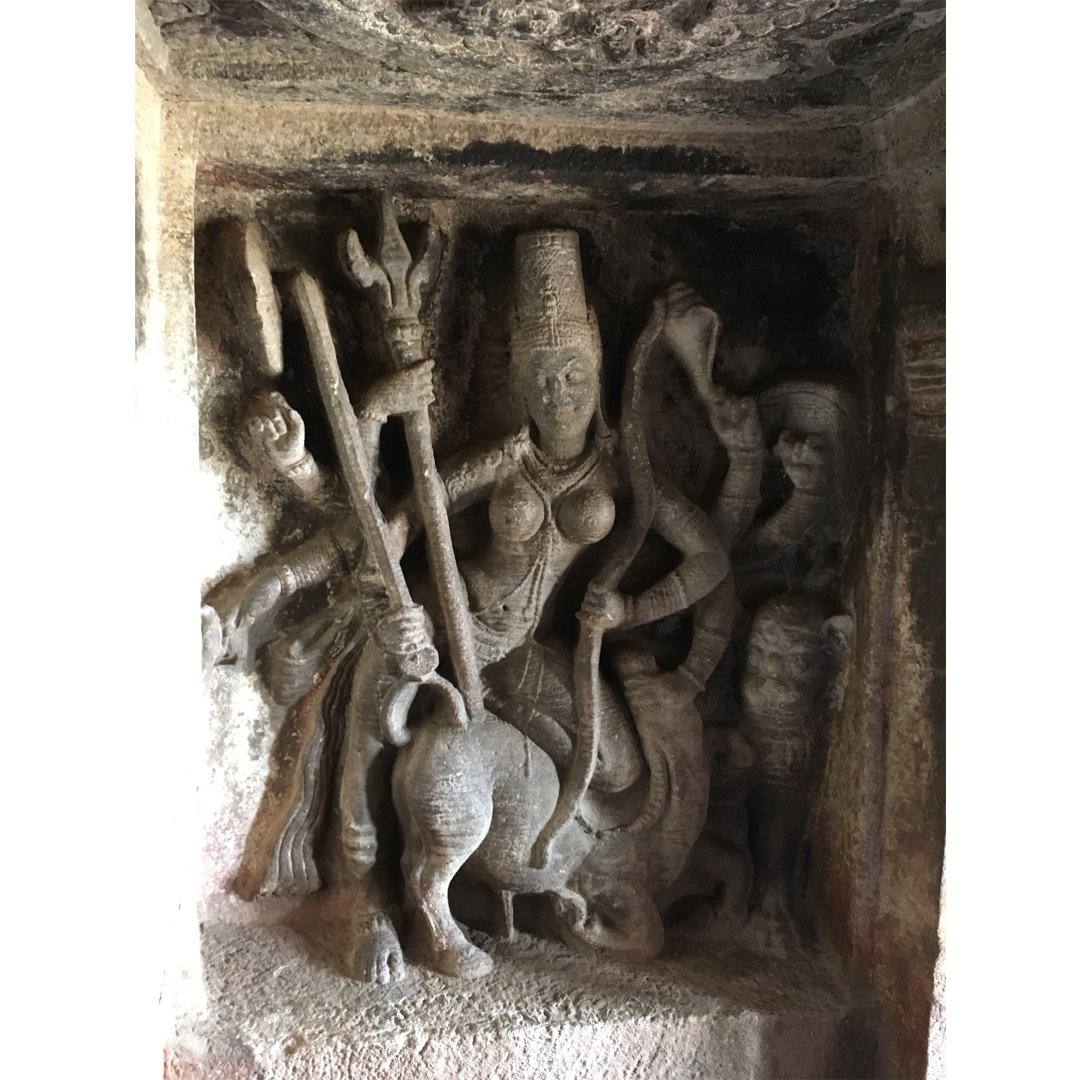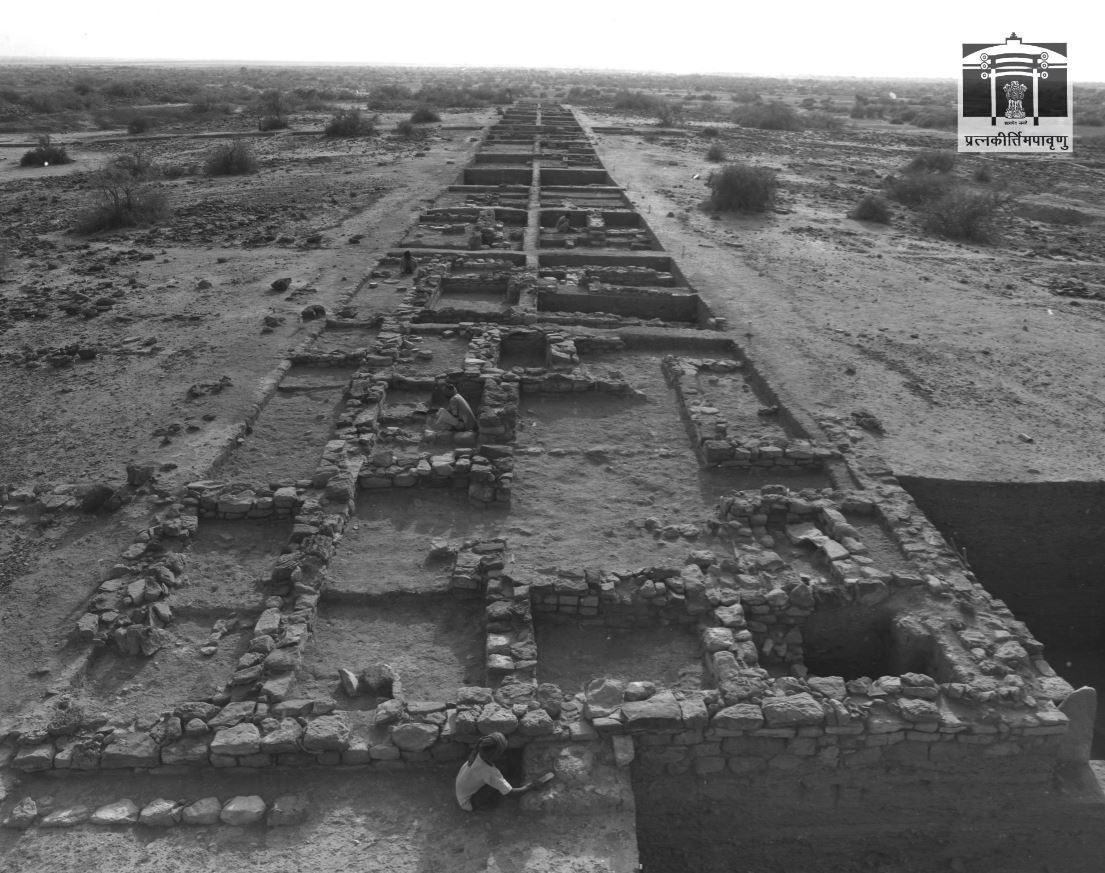
ASI under Ministry of Culture, Govt of India is the premier organization for the archaeological research and protection of the cultural heritage of the nation.
How to get URL link on X (Twitter) App


 Pic. 2 - One of the most remarkable images of Lord Ram holding bow-arrow, sword and shield is from the Dashavatar panel on the walls of Rani Ki Vav, Patan (Gujarat) 11th cen. CE
Pic. 2 - One of the most remarkable images of Lord Ram holding bow-arrow, sword and shield is from the Dashavatar panel on the walls of Rani Ki Vav, Patan (Gujarat) 11th cen. CE 

 1) Pather Masjid, Srinagar, Jammu and Kashmir
1) Pather Masjid, Srinagar, Jammu and Kashmir





 Ramalingesvara, larger of the two temples, features a garbagriha with a centrally placed linga, on a square pitha, beautifully adorned door frames, Agra-mandapa was added in the later period, probably post-Chola or Vijayanagara period. The deva koshthas at the (2/6)
Ramalingesvara, larger of the two temples, features a garbagriha with a centrally placed linga, on a square pitha, beautifully adorned door frames, Agra-mandapa was added in the later period, probably post-Chola or Vijayanagara period. The deva koshthas at the (2/6)


 took estampage and deciphered these plates; preserving India’s rich historical legacy. This royal charter was issued during the reign of Vijaya-Siva-Simha Verma and records the generous gift of land, known as Siyapura village, located in the Koṟikuṇḍa-Viṣaya region, (2/4)
took estampage and deciphered these plates; preserving India’s rich historical legacy. This royal charter was issued during the reign of Vijaya-Siva-Simha Verma and records the generous gift of land, known as Siyapura village, located in the Koṟikuṇḍa-Viṣaya region, (2/4)

 From Kath Kuni of Himalayas to Besara of the Karnatraka, from Nagara style of central India to Kalinga style of Odisha, from Chala style of Bengal to Dravida style of Tamil Nadu, every region added to the vernacular skills and artistry to adorn the abode of the Adiyogi. (2/22)
From Kath Kuni of Himalayas to Besara of the Karnatraka, from Nagara style of central India to Kalinga style of Odisha, from Chala style of Bengal to Dravida style of Tamil Nadu, every region added to the vernacular skills and artistry to adorn the abode of the Adiyogi. (2/22)


 II. Durga Temple, Location: Aihole, Karnataka (6th-8th Century CE) (2/8)
II. Durga Temple, Location: Aihole, Karnataka (6th-8th Century CE) (2/8) 






 #RamappaTemple is an outstanding example of temple architecture evolution illustrating a phase of development in science, technology & art of temple building & construction in Deccan India. The Temple is a lone testimony to highest level of artistic & engineering talents.
#RamappaTemple is an outstanding example of temple architecture evolution illustrating a phase of development in science, technology & art of temple building & construction in Deccan India. The Temple is a lone testimony to highest level of artistic & engineering talents. 







 Dholavira witnesses the entire trajectory of the rise & fall of early civilization of humankind. It demonstrates multifaceted achievements in terms of urban planning, construction techniques, water management, governance, development, art, manufacturing, trading & belief system.
Dholavira witnesses the entire trajectory of the rise & fall of early civilization of humankind. It demonstrates multifaceted achievements in terms of urban planning, construction techniques, water management, governance, development, art, manufacturing, trading & belief system. 







 The reign of Mauryan emperor Aśoka in 3rd century BCE is considered instrumental in spread of Buddhism in Indian subcontinent. With the establishment of monolithic Aśoka Stambha (pillar) bearing a highly elaborate capital, Aśoka distinguished Sanchi as a site of great importance.
The reign of Mauryan emperor Aśoka in 3rd century BCE is considered instrumental in spread of Buddhism in Indian subcontinent. With the establishment of monolithic Aśoka Stambha (pillar) bearing a highly elaborate capital, Aśoka distinguished Sanchi as a site of great importance. 





 The 1st phase of excavation by a team of @ASIGoI Excavation Branch – VI, Bangalore at Gottiprolu near Naidupeta in Nellore (now renamed as Sri Potti Sri Ramulu) district has discovered the remains of a huge settlement surrounded by a massive brick enclosure.
The 1st phase of excavation by a team of @ASIGoI Excavation Branch – VI, Bangalore at Gottiprolu near Naidupeta in Nellore (now renamed as Sri Potti Sri Ramulu) district has discovered the remains of a huge settlement surrounded by a massive brick enclosure. 

